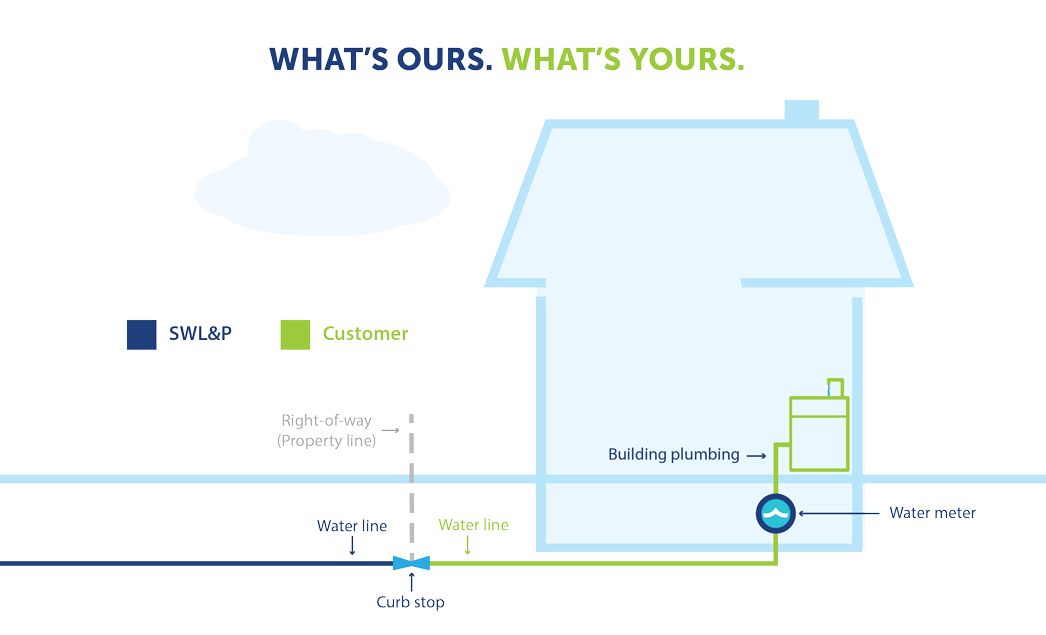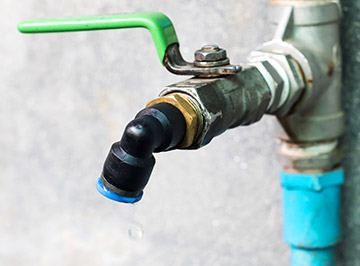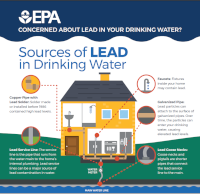Water and lead pipes
We take seriously the responsibility of providing safe and reliable utility services to our customers and work to ensure that the water we deliver meets all state and federal regulations, including the Safe Water Drinking Act. To better protect communities from any potential exposure to lead in drinking water, the federal Lead and Copper Rule requires water systems across the country to develop inventories of all service lines to identify lead pipes in preparation for their eventual replacement.
Bid notice: Professional services for lead lines 2026
Advertisement – Request for Qualifications (RFQ)
Superior Water, Light & Power (SWL&P)
Responses will be received by SWL&P, Attn: Supply Chain, at 30 W Superior St, Duluth MN 55802. Responses will be evaluated by SWL&P staff.
Responses due: Friday, December 23, 2025, at 4:30 PM
Project: SWL&P is requesting qualifications for a consultant to provide professional services to support lead service line replacements in the City of Superior and Village of Superior in compliance with federal and state regulations, ensuring clarity on roles, funding, and project execution.
This solicitation will be a two-step process. In the first step, SWL&P will review written qualifications and lead service line replacement approach-based proposals submitted by each Consultant. The second step involves selected Consultants, based on their proposals submitted in step one, being invited for a one hour interview with the selection committee. The Consultant will present on their experience as well as submit a cost-based proposal. SWL&P will use the cost-based proposal as part of the final selection criteria.
Documents: May be obtained by contacting isupplierinquiries@allete.com.
SWL&P encourages the participation of minority, women-owned and disadvantaged business enterprises.
SWL&P reserves the right to reject any or all proposals, to waive irregularities, or to accept such proposals, as in the opinion of SWL&P, will be in its best interests.
Water service line inventory
SWL&P completed its initial system-wide inventory of all service materials in our water system in 2024. Follow the steps in the map below to view the type of service material located at your home. Click the "Service Line Inventory Map" button below to load the map.
If your customer-side service type is listed as “unknown”, please schedule a short appointment with SWL&P to identify the pipe material in your home by calling our customer service team at 1-800-227-7957. Inspecting the pipe takes 5-10 minutes and there is no fee. Someone 18 or older will need to be present to allow our technician access to the water meter, usually located in the basement or utility room.
If your service line has been identified as lead or galvanized and will need to be replaced, SWL&P will contact you regarding next steps.
Replacing lead service lines
If you are planning on replacing the portion of the service line that you own, please notify us at 1-800-227-7957 or swlpquestions@swlp.com before starting. It is important for us to know what service lines are being replaced, and we may be able to answer questions you may have. Federal regulations require a water system to replace its portion of a lead service line when the property owner notifies the system that they are replacing their portion of that lead service line.
Water safety and quality
Water safety and quality are the continuous focus of our water system operators, including frequent testing of water samples from throughout our system at our in-house lab and other state-certified labs. Lead is not in drinking water when it leaves the water treatment plant, but it can get into water as it sits or passes through service lines, private plumbing systems or fixtures that contain lead. Most lead in tap water leaches from lead service lines, and customer’s pipes and fittings.
SWL&P has been providing water since the 1890s and our system is known to include some lead-pipe service lines. To help reduce potential contamination from those lead pipes, our water treatment process includes controlling the pH of the water as well as the addition of orthophosphate, a corrosion inhibiter, that helps to prevent lead from dissolving from pipes into the water. These controls have been proven effective through many years of water sampling from representative residences across the city.
You can follow simple practices to further reduce the potential for lead in your water. For example:
- Before drinking, flush your home’s pipes by running the tap, taking a shower, doing laundry, or doing a load of dishes.
- Use only cold water for drinking, cooking and making baby formula. Remember, boiling water does not remove lead from water.
- Regularly clean your faucet’s screen (also known as an aerator). Sediment, debris, and lead particles can collect in your aerator. If lead particles are caught in the aerator, lead can get into your water.
- If you use a filter, make sure you use a filter certified to remove lead and know when it’s time to replace it.

About lead and its effects on health
Lead is a common metal that has been used in many different applications throughout time, including plumbing materials and pipes, paint, gasoline and many other everyday items. As the harmful effects of lead on human health were better recognized, its use was stopped or limited in many items that could cause exposure.
Exposure to lead in drinking water can cause serious health effects in all age groups. Infants and children can have decreases in IQ and attention span. Lead exposure can lead to new learning and behavior problems or exacerbate existing learning and behavior problems. The children of women who are exposed to lead before or during pregnancy can have increased risk of these adverse health effects. Adults can have increased risks of heart disease, high blood pressure, kidney, or nervous system problems.
The Wisconsin DNR website has additional information on the possible health effects as well as ways to reduce your exposure to lead.
If you want to have your water tested for lead, you can arrange for testing by a state accredited laboratory. The Wisconsin DNR maintains a list of accredited labs here: Laboratories | | Wisconsin DNR.

Resources and information
- SWL&P: See our annual water quality reports
- EPA: The basics about lead in drinking water
- EPA: The revised federal lead and copper rule
- EPA: Spanish language resource
- NPR: Identify the lead pipes in your home
- Wisconsin DNR: Drinking water and lead
Questions or concerns
If you have questions, call 1-800-227-7957 or email swlpquestions@swlp.com.



